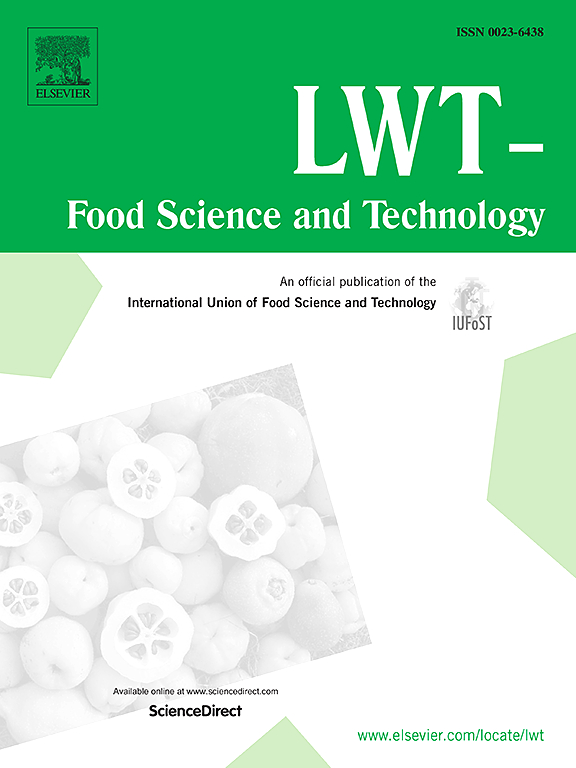Physicochemical and functional properties of whey protein-Yeast beta-glucan conjugates formed by glycosylation
IF 6
1区 农林科学
Q1 FOOD SCIENCE & TECHNOLOGY
引用次数: 0
Abstract
There is a growing interest in the development of digestive protein-stabilized emulsions due to their potential applications in the field of functional foods. Glycosylation is a biochemical process that enhances protein functionality through the covalent attachment of sugar moieties. This study aims to synthesize whey protein-Yeast beta-glucan (YG) conjugates via the dry heat method, examine the effects of various glycosylation reaction conditions on the functional properties of whey protein isolate (WPI), and characterize the properties and structures of the resulting conjugates. The results demonstrated that under different water activity conditions (0.49, 0.63, 0.74), the degree of glycosylation for WPI-YG conjugates with ratios of 1:1, 2.5:1, and 1:1, and reaction times of 24 h, 72 h, and 96 h were 7.78 % ± 0.19 %, 9.6 % ± 0.1 %, and 7.63 % ± 0.38 %, respectively. Fourier-transform infrared (FT-IR) and SDS-PAGE spectroscopy confirmed the formation of conjugates. Scanning electron microscopy (SEM) revealed that WPI can covalently bind with glucan, resulting in smoother and denser surfaces of the conjugates. Circular dichroism and X-ray analysis indicated that glycosylation altered the secondary structure of WPI. In conclusion, this study provides valuable insights into developing functional properties of glycosylated products for food ingredients.

糖基化形成的乳清蛋白-酵母β -葡聚糖缀合物的物理化学和功能特性
由于消化蛋白稳定乳剂在功能食品领域的潜在应用,人们对其开发越来越感兴趣。糖基化是一种生化过程,通过糖部分的共价附着来增强蛋白质的功能。本研究旨在通过干热法合成乳清蛋白-酵母β -葡聚糖(YG)偶联物,考察不同糖基化反应条件对乳清分离蛋白(WPI)功能特性的影响,并对所得偶联物的性质和结构进行表征。结果表明,在不同的水活度条件(0.49、0.63、0.74)下,WPI-YG偶联物的糖基化度分别为:1:1、2.5:1和1:1,反应时间为24 h、72 h和96 h,分别为7.78%±0.19%、9.6%±0.1%和7.63%±0.38%。傅里叶变换红外(FT-IR)和SDS-PAGE光谱证实了共轭物的形成。扫描电镜(SEM)显示WPI能与葡聚糖共价结合,使得共轭物表面更光滑致密。圆二色性和x射线分析表明糖基化改变了WPI的二级结构。总之,本研究为开发糖基化食品原料的功能特性提供了有价值的见解。
本文章由计算机程序翻译,如有差异,请以英文原文为准。
求助全文
约1分钟内获得全文
求助全文
来源期刊

LWT - Food Science and Technology
工程技术-食品科技
CiteScore
11.80
自引率
6.70%
发文量
1724
审稿时长
65 days
期刊介绍:
LWT - Food Science and Technology is an international journal that publishes innovative papers in the fields of food chemistry, biochemistry, microbiology, technology and nutrition. The work described should be innovative either in the approach or in the methods used. The significance of the results either for the science community or for the food industry must also be specified. Contributions written in English are welcomed in the form of review articles, short reviews, research papers, and research notes. Papers featuring animal trials and cell cultures are outside the scope of the journal and will not be considered for publication.
 求助内容:
求助内容: 应助结果提醒方式:
应助结果提醒方式:


